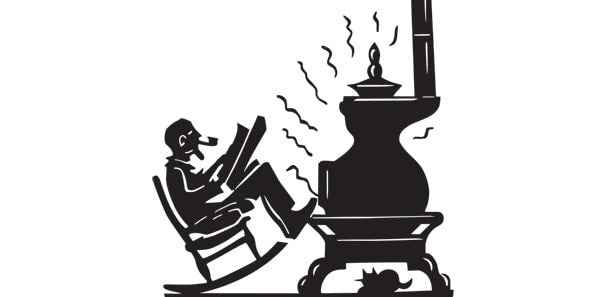For more than a million years, humankind has harnessed the power of fire. It has provided warmth for our bodies, heat for cooking, warm water for washing – many essentials of life. Way back when, cave men dug fire pits in the middle of their homes, which were eventually replaced by rudimentary fireplaces with little-to-no ventilation.
For thousands of years, people lived in smoke-filled structures; but they were warm and fed. It wasn’t until the 1600s that people started experimenting and looking for better ways to contain and fuel fire in homes.
The Earliest Stoves
In the 1700s, German immigrants introduced “stoves” called Five Plates or Jamb. Widely used in the U.S., they were set into the wall and fired from a fireplace in an adjoining room. While primitive by today’s standards, they emitted more heat and produced less smoke than the open fireplaces of the times. So they were an improvement. Later that century, the famous American patriot Benjamin Franklin invented the Franklin Stove – a major innovation in wood stove history. It offered better ventilation, had a convection chamber, and because it was made of cast iron, it radiated heat long after the fire went out. His design was further improved by another American, David Ritterhouse, who added a stovepipe shaped like an L to vent air to the chimney.
The Next Century
People were happy with their wood stoves in the 1800s. While they weren’t as attractive as the open fireplaces of the times, they were much more efficient, has fairly good controllable airflow with some sort of baffle system. By today’s standards, they would be illegal in most states due to high particulate emissions, but they were a big improvement for the times, as they were about 30% efficient (vs. today’s stoves at 80% efficient.)
1900s and Today
Fast forward another century and wood stoves were overhauled again – several times. The energy crisis of the 1970s caused a huge surge in their popularity. But the designs were still inefficient, emitted high levels of particulates (pollution), and were fire hazards due to significant creosote build-up. But people were snatching them up and saving money by heating their homes with wood.
In the late 1980s, the Environmental Protection Agency (EPA) stepped in and drastically changed the wood stove industry. The concern was emissions produced by the stoves and effect they had on the environment. The EPA set emission limits at 7.5 grams per hour for wood stoves, and manufacturers responded either by improving their designs or going out of business.
Many EPA-certified wood stoves today, such as the Quadra-Fire 3100 Step Top have extremely low emissions – as low as 1 to 2 grams per hour. They are outfitted with 21st century burn technology that enables “complete combustion,” meaning the wood receives ample oxygen, burning at high temperatures for an amount of time that ensures the combustion gases are also burned before being expelled through the stove pipe. And they have another important benefit – complete combustion helps prevent accumulation of creosote.
Pellet Stoves
Similar in appearance to today’s wood stoves, pellet stoves produce even fewer emissions than wood stoves – so little that they don’t require testing by the EPA. They debuted during the energy crisis of the 1970s as an alternative heat source when oil was scarce. Pellet stoves eliminated stacking and storing large amounts of wood, required refueling only once or twice a day, and burned cleaner with less ash to clean up. This is still the case today, although today’s models are more efficient yet. If you aren’t familiar with pellet stoves, they burn pellets, which look similar to rabbit feed and are generally made from recycled wood and biomass materials.
Options Abound
Today there are many models and brands of wood and pellet stoves from which to choose. Many homeowners save money and contribute to a greener Earth by heating all or part of their home with wood or pellets, which are naturally renewable fuels. It’s possible to find the perfect style and functionality to compliment your home’s décor and your lifestyle. Check them out yourself here.






